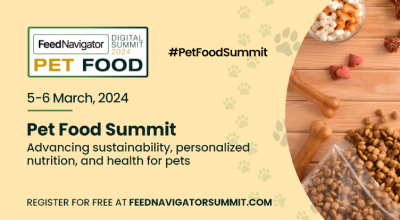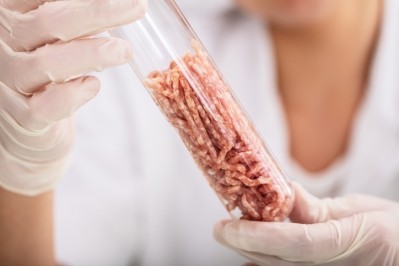Precision fermentation technology company, Bond, unveils partnership with pet food major

The US-based company has delivered two metric tons of animal protein to Hill's Pet Nutrition.
Bond says this represents a major milestone toward it commercializing its fermentation technology for pet food applications. The scale of the delivery will allow Hill's to formulate a variety of test products at its Pet Nutrition Center in Topeka, Kansas, for regulatory review and evaluation. That data will be used for the ingredient's eventual review by the US Food and Drug Administration's Center for Veterinary Medicine (CVM), as well as to prepare prototypes for market evaluation.
A multitude of startups are working on developing meat proteins for pet health, according to Bond Pet Foods founder and CEO, Rich Kelleman. Some are doing so through cell culture, while others are employing traditional or biomass fermentation methods to create alternative proteins that have nutritional value.
“We’re big fans of all the companies that are emerging in the space,” he told us.
Last year we heard how BioCraft Pet Nutrition, a company developing cultured meat for the pet food market, had created a chicken cell line for both cat and dog food. It is derived from stem cells; the cultured chicken ingredient develops under process conditions inside a bioreactor.
Bond’s approach is different. It sources DNA extracted from a blood sample from a live chicken, and then, using a fermentation process, the company’s R&D experts combine that DNA with yeast and put into a fermentation tank, where it is fed sugars, vitamins, and minerals. Once it reaches a certain density and composition, the fermented meat protein is dried and ground into a powder.
“We’re using a technology - precision fermentation – that has been around for more than half a century to make enzymes for cheese manufacturing to vitamin B12 and lactic acid. We’re just reassembling the process to produce animal proteins more efficiently and responsibly like chicken, turkey and fish that can be foundational for pet health.”
The company has a number of animal proteins in its commercial pipeline.
Scalable, cost effective, nutritionally complete proteins
He continued: “The animal proteins we’re developing at Bond are nutritionally complete in terms of their essential amino acid profile but, equally important, they are scalable, with a cost structure that allows for high inclusion in a variety of pet food applications including kibble and wet formats.”
Kelleman maintains that the startup’s straightforward production process which involves minimal downstream processing makes the math work for pet food applications. “At scale, we have a line of sight where Bond’s ingredients will be price competitive with animal proteins routinely used in the industry - whether that is meat trim, low-ash meals or dried bone broth.”
And Hill’s and Bond have entered into another agreement to expand their collaboration to produce a second animal protein for the pet food major’s product portfolio. “This commitment represents Hill’s confidence in the value and performance of Bond’s protein proposition- and its potential for the industry at large,” said the CEO.
Regulatory pathway
There’s currently no pet food made with cell-cultured meat available on shelves. In June last year, US regulators approved the sale of chicken made from animal cells for use in human foods. But they have not approved cultivated meat as a pet food ingredient, yet.
Asked when the company envisages these kinds of novel proteins securing US regulatory approval and becoming commercially available, Kelleman commented: “Specific to Hill’s, working with the volume of protein delivered, its global innovation team is developing a variety of prototypes for market evaluation – data generated will be used for the FDA CVM's review. That engagement has begun; the timeline will follow CVM’s standard process for ingredient approval.”
Environmental impact
Evaluating environmental impact of its protein products is mission critical for Bond, said the founder. A science-based lifecycle analysis (LCA) of its production process is underway. “We have just begun to produce significant quantities (tons) of our animal protein ingredients, which has allowed us to begin this exercise; once the assessment is complete, we expect it will provide substantiation of Bond’s reduced emissions and resource impacts compared with conventional proteins that are on the market today.”
A study from Plos One, published in 2017, claims that increasing animal production is a threat to the sustainability of the global food system, and that the non-negligible contribution of dogs and cats is compounding the problem and exacerbating the threat to sustainability. Given the increasing pet ownership in various markets and the trends in humanization of pet food, some fresh dog products are competing directly with the human food system, noted those researchers.
Another more recent study applied an economic value allocation approach to the impact of animal byproducts (ABPs) and other animal products used in pet food as the researchers felt it would better represent better the environmental impact of the pet food sector. They claim that the use of ABPs, long seen by the pet food industry and other commentators as circularity in action, is not in fact neglible in terms of environmental impact. "ABPs are not valueless, and provide a financial return to the livestock industry that incentivises increased livestock production, with implications for environmental impacts."











